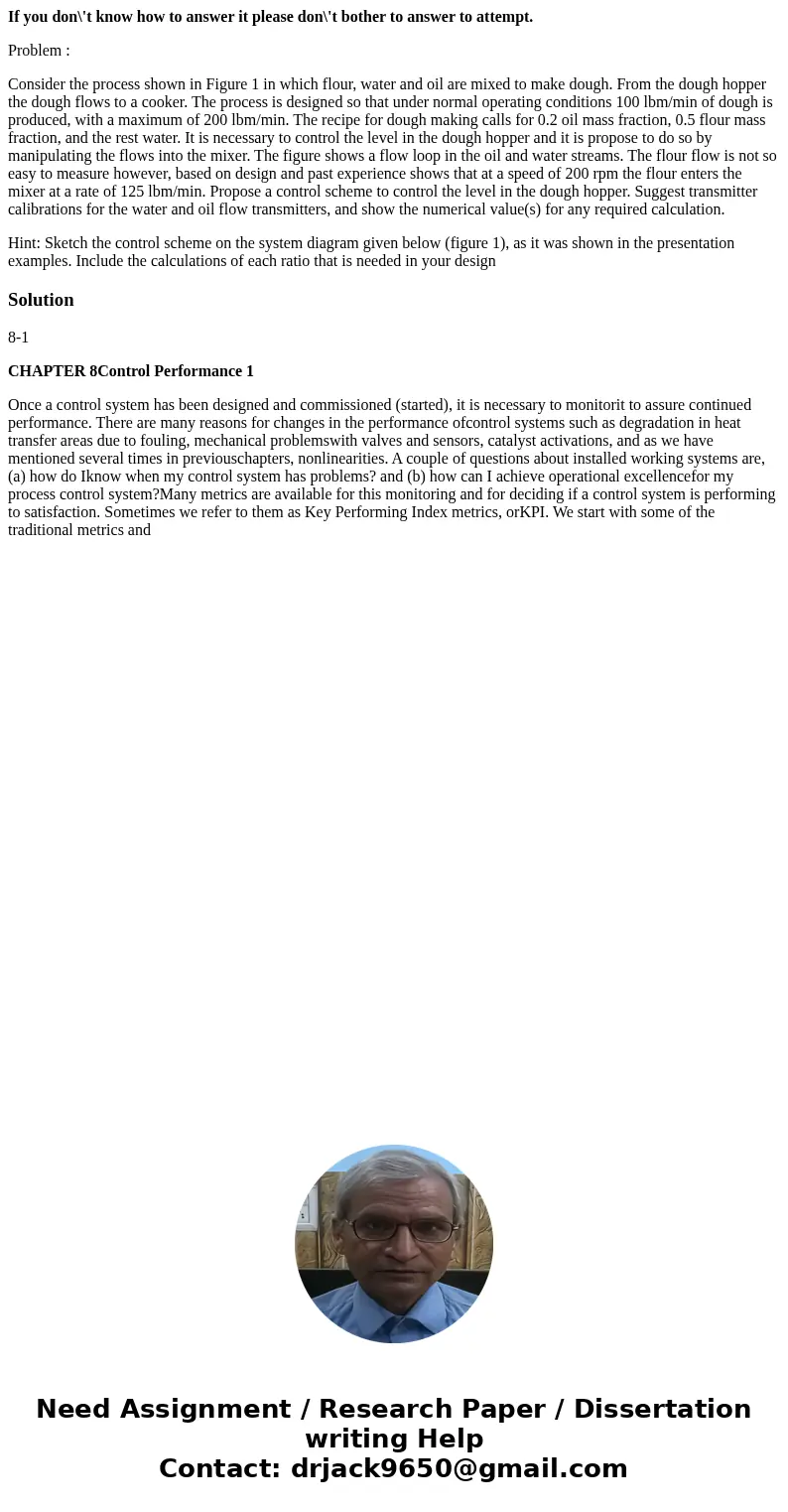If you dont know how to answer it please dont bother to answ
If you don\'t know how to answer it please don\'t bother to answer to attempt.
Problem :
Consider the process shown in Figure 1 in which flour, water and oil are mixed to make dough. From the dough hopper the dough flows to a cooker. The process is designed so that under normal operating conditions 100 lbm/min of dough is produced, with a maximum of 200 lbm/min. The recipe for dough making calls for 0.2 oil mass fraction, 0.5 flour mass fraction, and the rest water. It is necessary to control the level in the dough hopper and it is propose to do so by manipulating the flows into the mixer. The figure shows a flow loop in the oil and water streams. The flour flow is not so easy to measure however, based on design and past experience shows that at a speed of 200 rpm the flour enters the mixer at a rate of 125 lbm/min. Propose a control scheme to control the level in the dough hopper. Suggest transmitter calibrations for the water and oil flow transmitters, and show the numerical value(s) for any required calculation.
Hint: Sketch the control scheme on the system diagram given below (figure 1), as it was shown in the presentation examples. Include the calculations of each ratio that is needed in your design
Solution
8-1
CHAPTER 8Control Performance 1
Once a control system has been designed and commissioned (started), it is necessary to monitorit to assure continued performance. There are many reasons for changes in the performance ofcontrol systems such as degradation in heat transfer areas due to fouling, mechanical problemswith valves and sensors, catalyst activations, and as we have mentioned several times in previouschapters, nonlinearities. A couple of questions about installed working systems are, (a) how do Iknow when my control system has problems? and (b) how can I achieve operational excellencefor my process control system?Many metrics are available for this monitoring and for deciding if a control system is performing to satisfaction. Sometimes we refer to them as Key Performing Index metrics, orKPI. We start with some of the traditional metrics and

 Homework Sourse
Homework Sourse